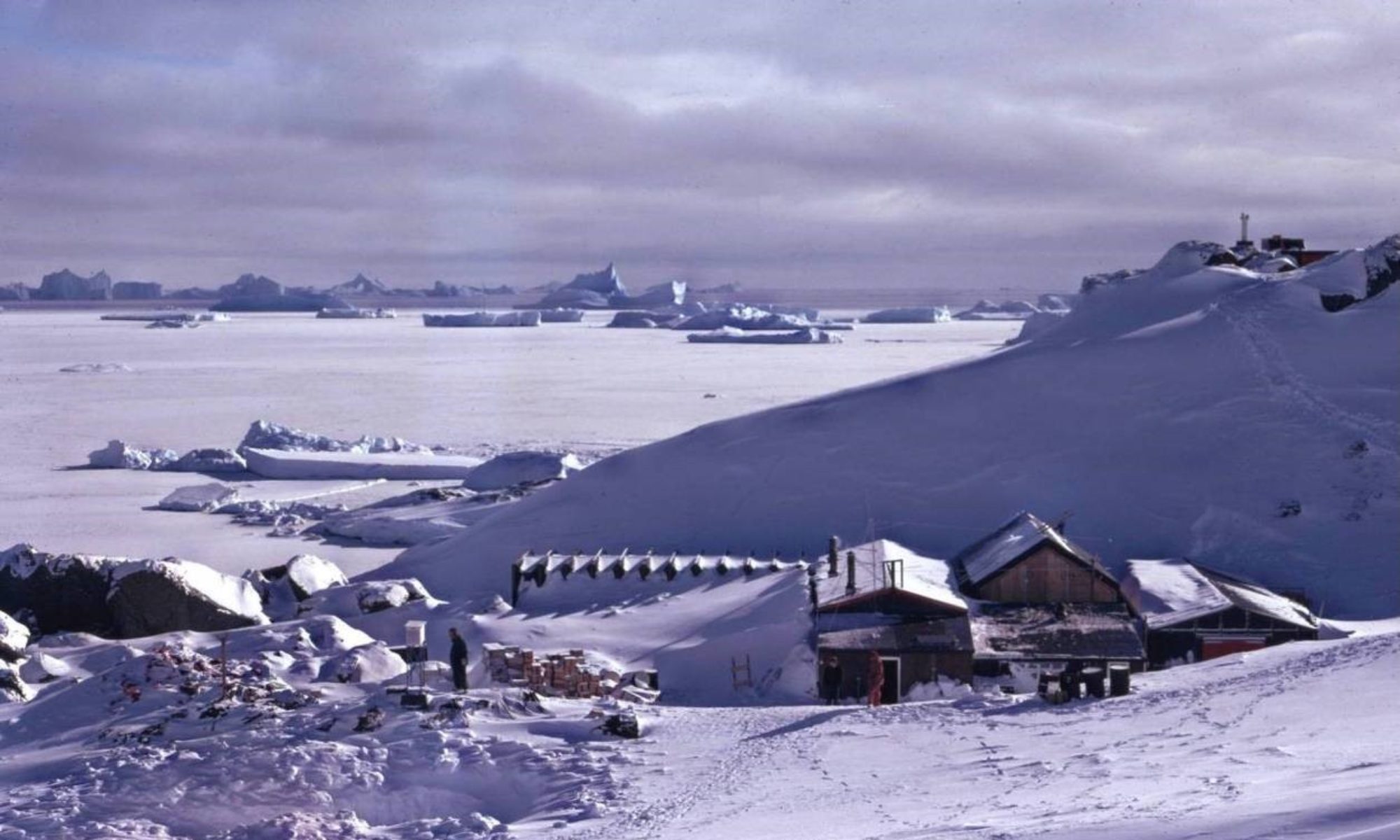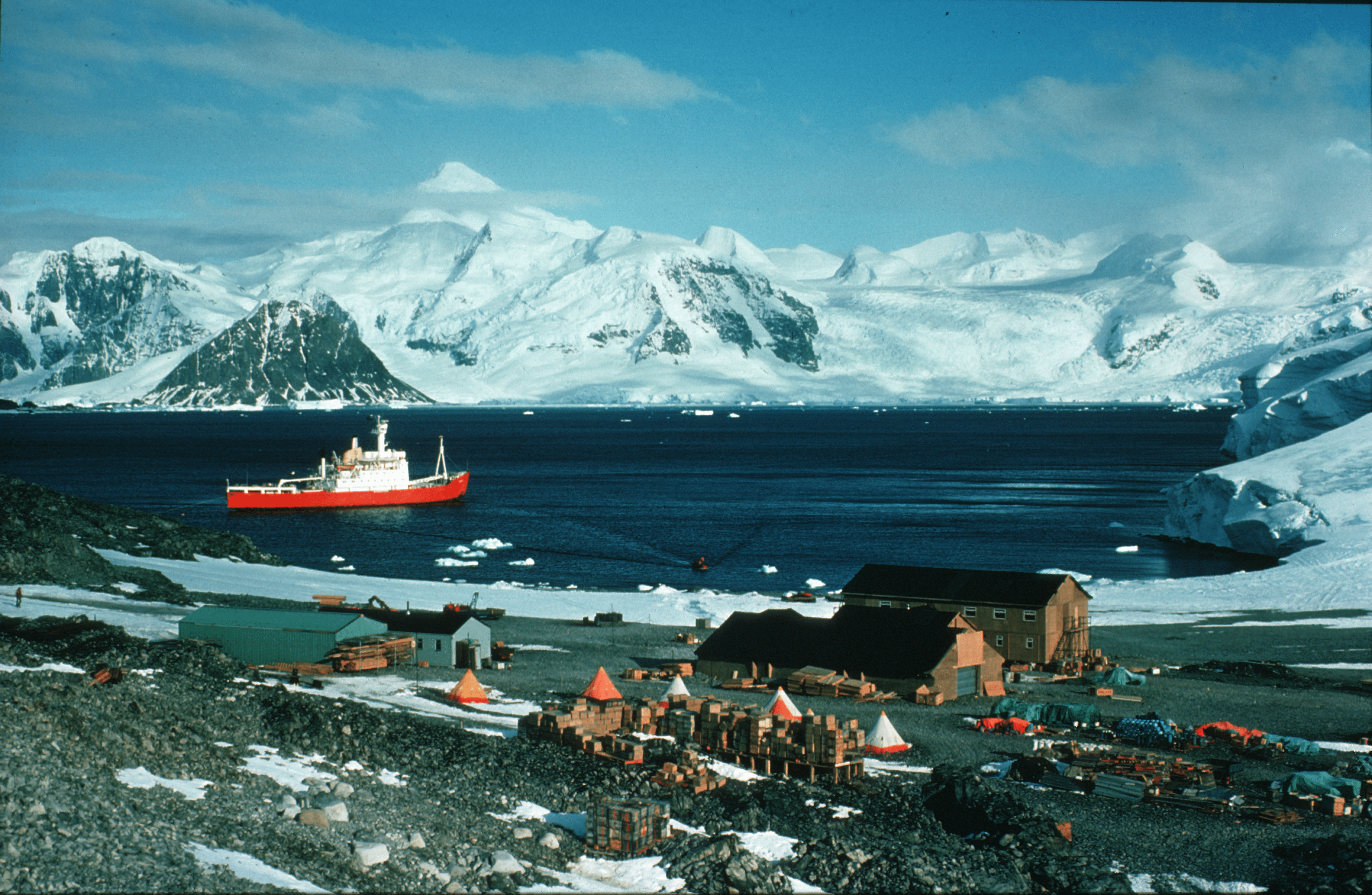
All the field parties were installed by the 2nd December, and the attention turned to clear the last of the Biscoe’s offloaded cargo at Damoy, and finally, December 6th, McManus and Boyle who were still in residence. The following day, what everybody feared came to happen – VP-FAP damaged a ski on takeoff at Adelaide, and with FAQ away at McMurdo Station, all flying operations ceased until VP-FAQ could make it back with a new ski. The ski was found to be missing some parts, and VP_FAQ then had to fly to Punta Arenas, Chile, to pick up the parts. Once VP-FAP was repaired, VP-FAQ returned to McMurdo Station.

John Biscoe arrived at Adelaide arrived in mid-January and unloading began for the 160 tons of concrete and other building materials for the new base complex. While unloading was ongoing, construction started, and the flight operations continued, all concurrently. While this was ongoing, VP-FAP crashed in the field at Gomez Nunatek, and again VP-FAQ was recalled from McMurdo Station to begin evacuation of the field parties, firstly the aircrew on the 23rd January.

Throughout the flying season, building work continued, all the concrete foundation work for each building had been completed to enable erection of both buildings. The unfortunate early return of the field GA’s and some scientists enabled many other construction jobs to be completed. Meanwhile, packing up Adelaide was underway, and once aircraft operations began in earnest, it became completely impracticable to work radio control to the aircraft and field parties from Adelaide, and so a very basis system was installed at Rothera, and for all intents and purposes, Adelaide was effectively closed.
This enabled those involved to concentrate on the enormous task of packing up an entire field support base from available materials! This task was completed shortly after the final incoming , and Bransfield was able to spend some time at Adelaide uplifting the large amounts of cargo lined up on the jetty approaches, while the outgoing personnel cleaned out, shuttered up and closed down the base.

The Adelaide cargo was ferried to Rothera by Bransfield and offloaded before departing again for sealing and echo-sounding work in Marguerite Bay. Throughout this period, work on the new base complex and generator shed continued, with the invaluable help of a 14-man Royal Marines working party from Endurance. As the middle of March approached, both buildings were nearing external completion.
Although not in the original Plan, the Bingham Store at Adelaide was dismantled, shipped to Rothera and re-erected under the supervision of Colin Horton, in one third the time it took to build at Adelaide in the first place!
The building was lined on the southern half with available polystyrene and plywood, to house the Clothing Store, and a carpenters workshop, which had not been included in the design for the new Base. The northern half was left unlined and stacked out with Dexion shelving to house all the canteen and chandlery stock, general stores, together with the Cold Room and four chest freezers.
Also not in the original Plan was the Director’s request during the prior summer to determine the amount of bedrock which would need to be blasted when a hard runway came to be built. In the space of 40 manhours (literally nothing in the big picture, the bulldozing operation cut, filled and leveled to create roughly 1/3 of what had been deemed by Pilot Giles Kershaw as the operational length required – without encountering ANY bedrock.
The projected runway would extend to the north and south from this initial section, with the southern end requiring virtually no work, and the northern end estimated to need around 150 manhours to fill and level as per the survey work carried out by Tourney and Walton (but without the perfect horizontal plane they specified, which had been deemed unnecessary by visiting BAS pilot Bert Conchie). Conchie deemed that with the 150 manhours of cut and fill work the next season, the runway would be perfectly viable. His on-ground inspection and (verbal) opinion was that such a runway would be infinitely superior, even untreated, to that from which he had been operating the same BAS Twotter on charter the previous summer, and much less risky.

The concrete pad for fuel pillow tank had also been completed, and Bransfield returned, discharged seal, and commenced attempts to moor and discharge bulk fuel. With everything being a “new first”, this took time, trial and error, but after various setbacks, the moor was accomplished on the 14th, and despite various technical hitches, the bulk discharge was completed around 0230 on the 15th March. After the final set of “new techniques” was accomplished (emptying and recovering 600 meters of fuel pipe), by lunchtime on the 15th March, all was complete, all Fids embarked and Bransfield departed in the late afternoon.

At the time of departure of the Bransfield, the base was in a reasonable position to be able to finish off the external work before the onset of winter. It has been hoped that the internal decoration could be virtually completed using the large workforce of shipborne Fids, Adelaide and Rothera personnel. However, when this was attempted, the water-based paints! froze on the walls due to the lack of heat, due to the lack of power at that time, so the plan had to be attempted.
The sixteen-man wintering complement were left with a heavy task – to finish the new Base ready for incoming work parties in the 1977/78 field season, and ensure that the usual pre-flight season tasks were accomplished.

